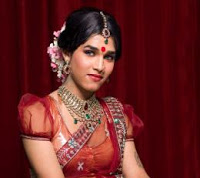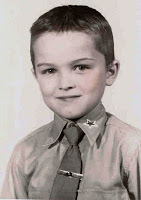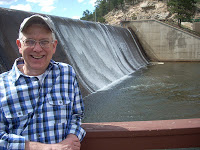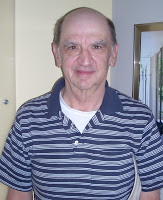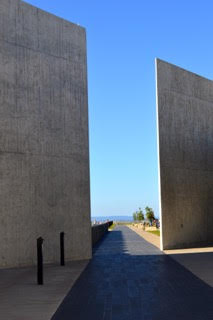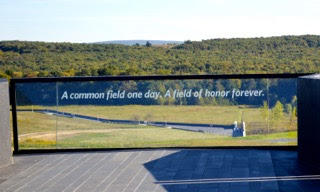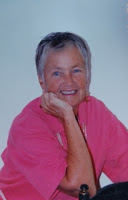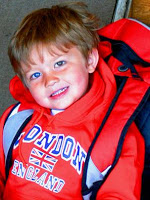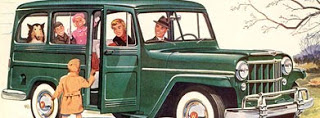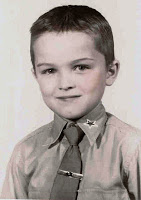When it comes to sexuality, both Mother Nature and
many humans have a peculiar way of dealing with it. Starting with non-human animals, there are
several creatures that display surprising characteristics.
many humans have a peculiar way of dealing with it. Starting with non-human animals, there are
several creatures that display surprising characteristics.
For example, male mourning-cuttlefish actually display
male or female physical characteristics depending upon which cuttlefish are
beside them. Males can appear to be male
on one side and female on the other when next to another male. The other male thinks he’s seeing two females
but no rival male. Clown anemonefish all
start out life as male. If the female
dies, the dominant male can change sex and become female. Another male will become the dominant
male. Parrotfish start out as male or
female but have sex organs of both sexes.
They are protogynous hermaphrodites, meaning they can change from female
to male.
male or female physical characteristics depending upon which cuttlefish are
beside them. Males can appear to be male
on one side and female on the other when next to another male. The other male thinks he’s seeing two females
but no rival male. Clown anemonefish all
start out life as male. If the female
dies, the dominant male can change sex and become female. Another male will become the dominant
male. Parrotfish start out as male or
female but have sex organs of both sexes.
They are protogynous hermaphrodites, meaning they can change from female
to male.
Human beings’ screwing with the environment is causing
some unexpected and potentially serious problems among the animal kingdom. A common pesticide called atrazine has been
found to induce sexual changes in frogs. The pesticide affects the frogs’
production of estrogen, transforming males into successfully reproductive
females. Scientists are working to find exactly how atrazine causes this change,
since it could become an issue with other animals as well. Maybe that accounts for, when I am attending
adult swim, my seeing so many man-boobs.
some unexpected and potentially serious problems among the animal kingdom. A common pesticide called atrazine has been
found to induce sexual changes in frogs. The pesticide affects the frogs’
production of estrogen, transforming males into successfully reproductive
females. Scientists are working to find exactly how atrazine causes this change,
since it could become an issue with other animals as well. Maybe that accounts for, when I am attending
adult swim, my seeing so many man-boobs.
Complete hermaphroditic humans are very rare, although
perhaps one baby in 2000 is born with some degree of intersex
characteristics. Sometimes the organs of
one gender are visible on the outside of the body, whereas the opposite gender
organs are inside. Some medical
researchers believe that the famous Joan of Arc was, in fact, an intersex male.
perhaps one baby in 2000 is born with some degree of intersex
characteristics. Sometimes the organs of
one gender are visible on the outside of the body, whereas the opposite gender
organs are inside. Some medical
researchers believe that the famous Joan of Arc was, in fact, an intersex male.
By now, most people are fairly familiar with gender
reassignment for those individuals whose psychological and emotional nature are
at odds with their physical forms.
Currently, a surprising number of people choose surgery to approximate
the opposite gender.
reassignment for those individuals whose psychological and emotional nature are
at odds with their physical forms.
Currently, a surprising number of people choose surgery to approximate
the opposite gender.
What is hard to explain, however, is that there are a
small number of males, including here in America, who have a psycho-sexual
compulsion to have themselves castrated.
If any behavior can fit into the category of “slippery sexuality,” I
think this might be.
small number of males, including here in America, who have a psycho-sexual
compulsion to have themselves castrated.
If any behavior can fit into the category of “slippery sexuality,” I
think this might be.
Of course, that is the perfect segue to the
Far-Eastern tradition of Hijra, sometimes known as “the third sex,” and
otherwise recognized as eunuchs. India,
with its ancient culture and religions, is so complex that one would have to be
a scholar to even begin to understand that part of the world. In India, the hermaphrodite, the homosexual,
and the transvestite have a symbolic value and are considered privileged
beings. Ample examples of this are found
in Indian religion, mythology, and folklore, which are replete with traditional
religious narratives such as in the Mahabharata, and the Vedas in the Puranas.
Far-Eastern tradition of Hijra, sometimes known as “the third sex,” and
otherwise recognized as eunuchs. India,
with its ancient culture and religions, is so complex that one would have to be
a scholar to even begin to understand that part of the world. In India, the hermaphrodite, the homosexual,
and the transvestite have a symbolic value and are considered privileged
beings. Ample examples of this are found
in Indian religion, mythology, and folklore, which are replete with traditional
religious narratives such as in the Mahabharata, and the Vedas in the Puranas.
For example, Ardhanarishvara, “The Lord whose half
is a woman,” is said to have been created by the merging of the god Shiva
and his consort Parvati. This form of Shiva is said to
represent the “totality that lies beyond duality.” A similar merger occurs between the
beauty-and-prosperity goddess Lakshmi and her husband Vishnu,
forming the hermaphrotitic or androgynous Lakshmi-Narayana.
is a woman,” is said to have been created by the merging of the god Shiva
and his consort Parvati. This form of Shiva is said to
represent the “totality that lies beyond duality.” A similar merger occurs between the
beauty-and-prosperity goddess Lakshmi and her husband Vishnu,
forming the hermaphrotitic or androgynous Lakshmi-Narayana.
Consequently, and for hundreds of years, literally
millions of young boys and men have chosen to totally emasculate themselves in
rather lengthy, traditional ceremonies in order to dress and to live as the
opposite gender – – an extremely bizarre phenomenon to us here in the West but
quite common in India, Pakistan, Thailand, and, to some extent, Singapore.
millions of young boys and men have chosen to totally emasculate themselves in
rather lengthy, traditional ceremonies in order to dress and to live as the
opposite gender – – an extremely bizarre phenomenon to us here in the West but
quite common in India, Pakistan, Thailand, and, to some extent, Singapore.
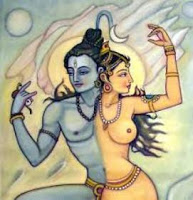 |
| Hijra Illustration |
Mid-Eastern cultures have had similar polysexual
myths. And of course, Greek culture
includes the god Hermaphroditus. Actual
intersex individuals were considered to be special.
myths. And of course, Greek culture
includes the god Hermaphroditus. Actual
intersex individuals were considered to be special.
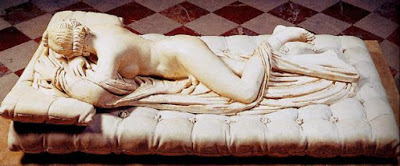 |
| Hermaphroditus |
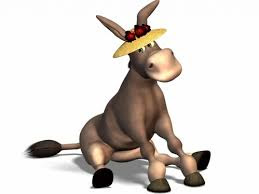 |
| Mr. Horsley’s first girlfriend. |
Apparently, sexual
compulsion is so irresistible in some people that they sometimes engage in
peculiar sexual aberrations that might be described as “slippery
sexuality.” Bestiality, having sex
with animals, is one example. I spoke
once about Republican Congressman Neal Horsley.
He is the man who, among other things, called for the arrest and imprisonment
of all homosexuals. I assume that he
felt that sex among same-gender persons is disgusting. He admitted, however, in an interview with
Alan Colmes on the Fox News Radio, to having engaged in sex with a mule. He tried to excuse his behavior by stating,
“When you grow up on a farm in Georgia, your first girlfriend is a mule.” In an attempt to prove to his constituents,
however, that he really is a decent man, he quickly went on to say that Jesus
had forgiven him and cleansed him of his “sin.” How convenient.
compulsion is so irresistible in some people that they sometimes engage in
peculiar sexual aberrations that might be described as “slippery
sexuality.” Bestiality, having sex
with animals, is one example. I spoke
once about Republican Congressman Neal Horsley.
He is the man who, among other things, called for the arrest and imprisonment
of all homosexuals. I assume that he
felt that sex among same-gender persons is disgusting. He admitted, however, in an interview with
Alan Colmes on the Fox News Radio, to having engaged in sex with a mule. He tried to excuse his behavior by stating,
“When you grow up on a farm in Georgia, your first girlfriend is a mule.” In an attempt to prove to his constituents,
however, that he really is a decent man, he quickly went on to say that Jesus
had forgiven him and cleansed him of his “sin.” How convenient.
 Then there was
Then there wasthat young Georgia redneck who became
so drunk one night that he pulled his car
over at a pumpkin patch and was arrested
for copulating with a pumpkin. That sounds pretty slippery. He was taken to court, but most of the charges were
dropped because the judge and whole
courtroom broke out laughing when the
arresting officer related the incident. She testified that she had approached the defendant
and asked, “What are you
doing with that pumpkin?” whereupon he
responded, “Oh shit! Is it midnight already?” This story was not made up. It actually happened!
Well, I’ve arrived at this point only to realize that I
have barely begun to mention human urges that may be regarded by some as
“slippery sexualities,” such as sadomasochism, bondage, necrophilia, compulsive
onanism, hebephelia, ephebephilia, and even the opposite of the desire to have
sex, genophobia, the fear of having sexual relations. Maybe I will write about these later. As it is, I already am becoming confused by
all of this.
have barely begun to mention human urges that may be regarded by some as
“slippery sexualities,” such as sadomasochism, bondage, necrophilia, compulsive
onanism, hebephelia, ephebephilia, and even the opposite of the desire to have
sex, genophobia, the fear of having sexual relations. Maybe I will write about these later. As it is, I already am becoming confused by
all of this.
© 9 January 2016
About the Author
I have had a life-long fascination with
people and their life stories. I also
realize that, although my own life has not brought me particular fame or
fortune, I too have had some noteworthy experiences and, at times, unusual
ones. Since I joined this Story Time
group, I have derived pleasure and satisfaction participating in the group. I do put some thought and effort into my
stories, and I hope that you find them interesting.
people and their life stories. I also
realize that, although my own life has not brought me particular fame or
fortune, I too have had some noteworthy experiences and, at times, unusual
ones. Since I joined this Story Time
group, I have derived pleasure and satisfaction participating in the group. I do put some thought and effort into my
stories, and I hope that you find them interesting.
